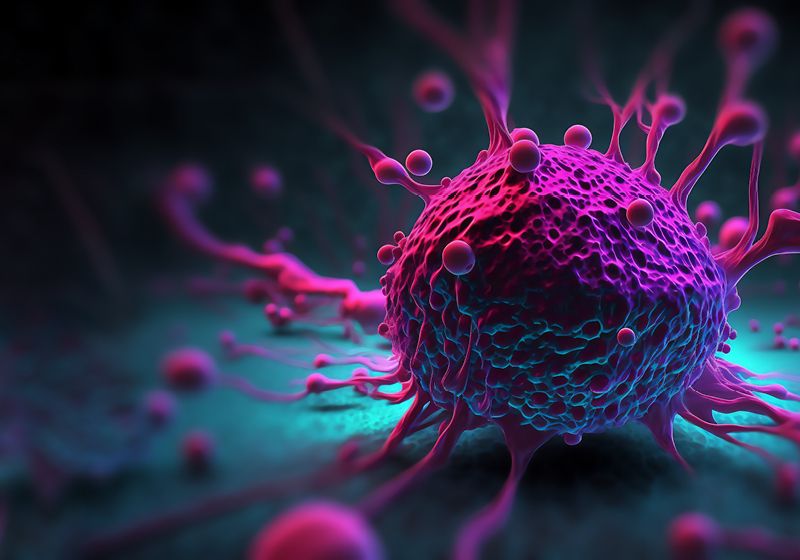Deep Visual Proteomics helps researchers create spatial maps of protein expression in cancerous tumors.
When Matthew Padula was diagnosed with a rare bladder cancer in 2020, he knew there was a challenging road ahead of him. As a researcher at the University of Technology Sydney, his first instinct was to read the literature. But there was little published information about his cancer type, signet cell adenocarcinoma.
Padula realized this dearth of information presented a unique opportunity to contribute to the field and learn more about his own cancer. “Generat[ing] more data could add to the body of knowledge, while potentially giving me new avenues for treatment,” he said.
By partnering with a team of proteomics researchers on the opposite side of the world, Padula was able to use a new method called Deep Visual Proteomics (DVP) to generate a spatial proteomic map of his tumor and identify key dysregulated proteins.1 He and his collaborators believe that this case study showcases the potential for spatial proteomics to advance clinical care for cancer patients.
To study proteins in tumors, pathologists typically use error-prone antibodies. Padula suspected that mass spectrometry might be more specific and accurate, but he did not have a way to make spatially resolved measurements. Deep Visual Proteomics, developed in Matthias Mann’s laboratory at the Novo Nordisk Foundation Center for Protein Research and the Max Planck Institute of Biochemistry, offered a solution that combined imaging with machine learning.2 This enabled researchers to use a laser to isolate individual cells from a piece of tissue, measure each cell’s proteins with mass spectrometry, and map this proteomic profile back to the cell’s original location in the tissue.
“Here was a technique that actually fulfilled everything that I thought we needed to do to spatially profile cancer properly,” Padula said.
Padula struck up a collaboration with Mann and his graduate student Sonja Kabatnik. He mailed them pieces of his tumor that had been preserved in paraffin blocks. Kabatnik cut the blocks into thin slices to run DVP, tweaking the protocol along the way to make sure that she could see the key cells and proteins in Padula’s tumor.
By analyzing the data, Kabatnik identified changes in DNA damage response proteins that pointed to the mismatch repair pathway as the likely root of Padula’s cancer. As the cells replicated their DNA and divided, the proteins responsible for catching and fixing certain errors were not doing their jobs, allowing cancerous mutations to persist in the cells. There were also high levels of immune proteins, including PD-1. This was good news to Padula: PD-1 is the target of pembrolizumab, the drug that Padula’s doctors had chosen to treat his cancer. “It validated that me being on pembro was actually a reasonable treatment,” he said.
With its combination of imaging and mass spectrometry, “DVP allows for a true lens of discovery proteomics,” said Arutha Kulasinghe, a spatial biologist at the University of Queensland who was not involved in this study. “Adoption of this approach globally, paired with other omics, will give us better insights into the tumor microenvironment.”
Kabatnik hopes that people see this work as evidence that mass spectrometry can be used as a diagnostic tool in the clinic. Kulasinghe agrees that proteomics can be a valuable clinical tool but said that one obstacle for DVP will be how resource-intensive it is. Joe Yeong, an immunopathologist at the Agency for Science, Technology and Research in Singapore who was not involved in this study, noted that to be useful as a clinical tool, turnaround time is the most important factor: Doctors want to get results in around two weeks or less, which will require automating the labor-intensive parts of the DVP pipeline.
Kabatnik estimates that the process of running DVP on a tumor sample would take around three weeks currently, but she expects this timeframe will become shorter as the technology is optimized. “I think people will be more accepting towards proteomics in the clinic,” Kabatnik said. “Proteomics gives you the functionality of what is actually happening.”

